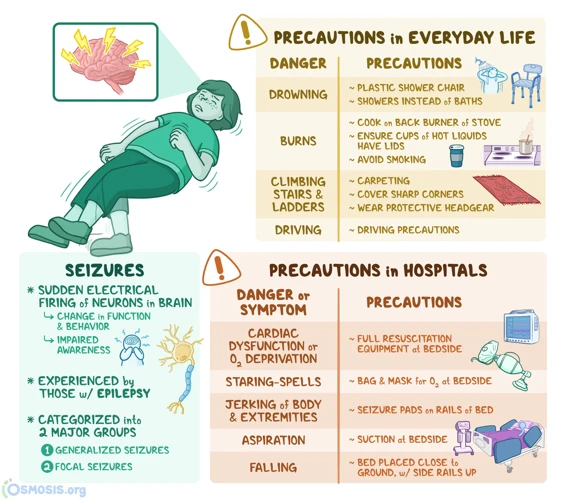For firearm enthusiasts, the art of reloading can be a satisfying and cost-effective hobby. However, the process of priming, a key step in reloading, requires a deep understanding of safety protocols to prevent accidents. Whether you’re new to this skill or an experienced hand, adhering to priming safety tips is paramount.
Understanding the Basics of Firearm Priming
Priming is the process of inserting a primer into a cartridge case, which is vital for igniting the gunpowder and firing the bullet. It’s a delicate task that involves handling small, but sensitive components capable of igniting with significant force. To manage risks, one must comprehend the function of primers and treat them with respect and caution.
Essential Firearm Priming Precautions
Before embarking on the priming process, familiarize yourself with firearm priming precautions. This includes wearing safety goggles, working in a well-ventilated area, and ensuring a clean workspace free of flammable materials. By doing so, you minimize the risk of unexpected ignitions and protect yourself from potential harm.
Safe Priming Techniques
Adopting safe priming techniques is crucial for the prevention of mishaps. As you handle these small, yet powerful components, remember that they require gentle handling and a methodical approach to ensure your safety and the quality of your ammunition.
Handling Primers Safely
- Avoid touching primers with oily or greasy hands, as contaminants can compromise their integrity.
- Never force a primer into a case; if it doesn’t fit easily, inspect both the primer and the case for defects.
- Use primer trays to handle and orient primers correctly, reducing the risk of setting them off.
Step-by-Step Guide to Safe Primer Installation
- Inspect the primer pocket of the casing for cleanliness.
- Position the primer anvil-side up in the priming tool.
- Gently press the primer into the pocket until it sits flush with the base of the case.
- Double-check the primer’s placement before proceeding to the next round.
Reloading Primer Safety
Reloading primer safety extends beyond the immediate act of inserting primers. It encompasses the entire reloading process, from storing components to handling gunpowder. Ensuring you follow best practices throughout is key to a safe and successful reloading experience.
Home Reloading Safety Tips
Those who reload at home must consider their environment. A dedicated, clutter-free space, away from distractions, is essential. Additionally, keeping a first aid kit and fire extinguisher nearby provides extra layers of preparedness for any unforeseen events.
Gunpowder and Primer Safety Considerations
- Store gunpowder in original containers, away from heat sources and electrical equipment.
- Only have the amount of gunpowder you need for the session out of storage to limit exposure.
- Keep primers and gunpowder separated to prevent chain reactions in the event of an accident.
Primer Storage Solutions
Responsible storage is a cornerstone of ammunition safety. Using primer storage solutions that are designed for explosive components not only protects your primers from environmental damage but also significantly reduces the risk of accidental ignition.
Best Practices for Storing Primers
Store your primers in a cool, dry place, and ensure that the storage area is secure and out of reach of unauthorized persons, particularly children. It is also wise to use storage solutions that are resistant to moisture and direct sunlight to preserve the primers’ quality.
Avoiding Primer Accidents Through Proper Storage
To avoid primer accidents, always store primers in their original packaging, which is designed to safeguard them. Additionally, consider using a lockable ammo cabinet or safe for added security. Regularly inspect your storage area for any changes in temperature or humidity that could affect the primers.
Ammunition Priming Best Practices
The practice of priming ammunition is nuanced and requires a balance of knowledge, skill, and caution. By adhering to ammunition priming best practices, reloaders can ensure they produce reliable and safe ammunition while protecting themselves and their surroundings.
Mitigating Risks During the Priming Process
Mitigating risks involves a focus on detail and consistency. Always work in a well-lit area to easily spot any issues. Use a priming tool that provides a shield between the primer and your body, and never attempt to prime cases when you are tired or distracted.
Advanced Techniques for Experienced Reloaders
Experienced reloaders might explore advanced techniques, like batch priming or using a progressive reloading press. However, with increased complexity comes increased responsibility. Ensure that each step is conducted with precision and never become complacent, no matter your level of experience.
Conclusion
Summary of Key Priming Safety Points
In conclusion, adhering to priming safety tips is crucial for anyone involved in the reloading process. Remember to handle primers and gunpowder with care, follow safe priming techniques, and invest in suitable primer storage solutions. Above all, prioritize safety at every turn to ensure a rewarding and incident-free reloading practice.
When undertaking a painting project, safety should always be a top priority. If you’re looking for ways to ensure a safe and effective painting job, be sure to read our article on Priming Safety Tips. And for the best results, don’t forget to check out our guides on epoxy paint maintenance, applying filler, and how to clean roller covers. Each step in your painting process is crucial, and these tips can help you achieve a flawless finish while maintaining a safe working environment.
Continual Learning and Safety Improvement
Finally, the journey to safe reloading is one of continual learning and improvement. Stay updated with the latest safety protocols, regularly inspect your equipment, and always approach the reloading bench with a mindset geared towards safety. By doing so, you’ll ensure that your reloading process remains as safe as it is enjoyable.

